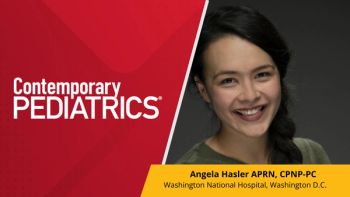
- Consultant for Pediatricians Vol 8 No 7
- Volume 8
- Issue 7
“Syndrome” or “Sequence”? Not Just a Matter of Semantics
Distinguishing properly between a syndrome and a sequence emphasizes the fact that anomalies can be either multiple and independent (syndrome) or related to one embryological event (single entity or sequence).
I commend the excellent discussion by Drs Alshaar and Leung on the association, first described by Poland, of ipsilateral chest wall and limb defects (
Distinguishing properly between a syndrome and a sequence emphasizes the fact that anomalies can be either multiple and independent (syndrome) or related to one embryological event (single entity or sequence).
Intrinsic versus extrinsic anomalies.
The term “sequence” was first used when an International Working Group (IWG)1,2 distinguished between anomalies intrinsic to the developing primordium (malformations) and its tissue (dysplasia) and those extrinsic to the primordium (disruptions caused by vascular breakdown/constriction, or deformations caused by immobility/ external constraint).
Infants with extrinsic anomalies (eg, amniotic band disruption, plagiocephaly deformation) have minimal genetic predisposition for their anomalies and a good cognitive prognosis. Infants with certain intrinsic anomalies (eg, cleft palate malformation, hemangioma dysplasia) warrant similarly optimistic counseling, provided the anomalies occur alone. The recognition that several anomalies are related as a sequence (eg, cleft palate and small jaw in Pierre Robin sequence) implies a low (2% to 5%) recurrence risk and good prognosis, since most sequences are isolated occurrences.
Differences in management.
The term “sequence” implies obligate associations, such as cervical vertebral anomaly within the broad neck in Klippel-Feil sequence; these obligate associations permit focused preventive management rather than requiring broad surveillance such as is needed for multiple-defect syndromes.
For pediatric disorders, what is most helpful is use of the terms that will promote optimal education and anticipatory guidance. Judged from this perspective, both terms-“Poland syndrome” and “Poland sequence”-have advantages: “Poland syndrome” ensures general understanding, while “Poland sequence” helps focus management.
-Golder N. Wilson, MD, PhD
Clinical Professor of Pediatrics
Texas Tech University Health Science Centers
Amarillo, Lubbock, and El Paso
I would like to thank Dr Wilson for his interest in our “What’s Your Diagnosis?” case of an infant with “Poland syndrome,” and I appreciate his thoughtful comments. I agree that the term “Poland sequence” is a more accurate description of the condition. A sequence is a primary defect with a secondary cascade of structural changes. As a matter of fact, when the article was first submitted, the word “sequence” was used. This was apparently changed to “syndrome” at some point during the editing process.a Suffice it to say, the term “Poland syndrome” is still used in major textbooks. However, I hope that the term “Poland sequence” will be used from now on.
-Alexander K. C. Leung, MD
Clinical Associate Professor of Pediatrics
University of Calgary
Pediatric Consultant
Alberta Children’s Hospital
Calgary, Alberta
aEditor’s Note: We take responsibility for making the change to “Poland syndrome.” We made this change based on the usage found in Stedman’s Medical Dictionary, which we take as the source for all medical terms used in CONSULTANT FOR PEDIATRICIANS. We apologize for having unintentionally altered what Dr Leung wished to convey, and we are grateful to both Dr Wilson and Dr Leung for educating us on this issue.
References:
REFERENCES:
- 1. Smith DW. Classification, nomenclature, and naming of morphologic defects. J Pediatr. 1975;87:162-163.
- 2. Benirschke K, Lowry RB, Opitz JM, et al. Developmental terms-some proposals: first report of an international working group. Am J Med Genet. 1979;3:297-302.
Articles in this issue
over 16 years ago
White Patches on a Young Boy's Trunkover 16 years ago
Hip Pain in a Teenaged Girlover 16 years ago
Bashful Baby Testiclesover 16 years ago
Distract ToddlersWith DummyBandagesover 16 years ago
Reversibility of TPN-Induced Cholestasisover 16 years ago
Frey Syndromeover 16 years ago
Pityriasis Lichenoides Et Varioliformis Acuta in a 7-Year-Old Boyover 16 years ago
Acute UrticariaNewsletter
Access practical, evidence-based guidance to support better care for our youngest patients. Join our email list for the latest clinical updates.








